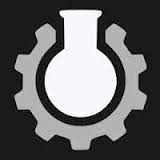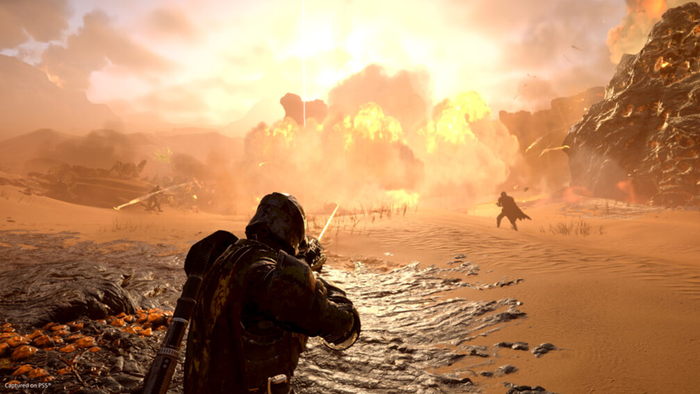Project Mars; A breakdown of features and solo desinger challenges.
John Schabarker discusses the challenge of designing alone, and goes over the main features for his 'Project Mars'.

Introduction
Hello, my name in John Schabarker. Currently I am a game design student, however, I have decided that I need to design a game while I am in school so that I have some experience under my belt. This is where Project Mars comes in. What is Project Mars? Well in short it is a tactical tabletop RPG that draws inspiration from digital games such as Gladius, XCOM, Fire Emblem, Shadowrun Returns and Divinity Original Sin. On the tabletop side of things it draws inspiration from games such as Dark Heresy, Warhammer 40K, and Pathfinder. There is quite a large amount of time tested and proven games to draw from as one can tell. The end goal for Project Mars is something fairly ambitious but overall fun to play. It has a good deal of neat features and challenges in itself.
Challenges of Solo Designing
As a student of game design, the first and largest obstacle to overcome is escaping the ‘I am not a game designer’ mindset. All aspiring game designers should begin in this mindset, while I cannot speak for anyone else I still have some struggles in settling into this mindset. As far as I can tell, the best way to get into this mindset is to design a game!
Starting on a project alone is a daunting giant of a task, especially one that seems large in scope and features. Working on a project alone is also something that is a day to day challenge. While you only have your self-accountability to bring a project to life it is also a great exercise in strengthening your professionalism and ability to design. The next hurdle to get across is project stagnation; a single mind on a design project does not have the advantage of confabulation for features and ideas. If you run into a problem who do you discuss it with? What do you do when you run out of ideas on your own? By the end of this project I fully expect at least one or two more names to fall under its list of creators.
Features
1. Character Creation, Classes and Customization
Like most Western RPG’s one of the key features in its design is the ability to create and customize your character(s). Of course the range of what you can do with this is as numerous as the hairstyles you can choose in Skyrim. When it comes to a tabletop game; the sky's the limit. So the question becomes less of how does a character look and more of a how does the character feel in combat and act outside of it? Well in a tactical RPG where just about all of the game is played in combat that rules out anything that is not combat itself. So how can one mitigate the losses in this type of game? Pull in more options like augmentations with combat bonuses, genetic modifications that can do the same only in contrasting ways. Of course something like this will cost in game resources and such but it will bring about a good variance in character types. Then there are character backgrounds, or in other words races. Though the race of a character will not matter their background will. For instance a character with a background in law enforcement will have higher stats in something like Strength and Constitution and lower in something like Agility and Intelligence. Also the background will provide a unique bonus such as re-rolling a failed melee attack. Then we have the classes. While it is obviously a niche way to further separate character types there are going to be some that are hybrid classes.
2. Team Based Tactics, Battlefield Manipulation and Arena Battles
With Project Mars a player will control a small team of units as opposed to a single player. Currently this is set to about five to ten characters per player which play tests using five characters lasted between thirty to ninety minutes in combat alone. Creation of an arena team also takes up a good deal of time, for five units it took about an hour to create. This was of course in the most basic iteration of Project Mars which did not have a very deep level of customization outside of items to equip. So next is the arena battle style of play. What I have decided to do here is allow both of the players to set up the arena they will battle in. This would include adding different cover types, peaks and valleys, buildings, defenses etc etc. Next we have battlefield manipulation which can be done in a wide array of methods. Deployable cover, bubble shields, explosive items, and vehicles. What this allows the players to do after creating the arena is a redundant method to alter the battle ground during combat. So not only is a player battling another player but also the arena that was built.
3. Tons of items, weapons, armor and mods
One of the best things about RPG’s is crafting amazing items that totally break the game. Now as most tabletops i have played go, there is no item crafting directly speaking. Most of this would have to come down to the GM or games features with a digital game. Project Mars will be a tad different in this aspect. While a player will not be able to create a low level piece of armor, the higher tiers of armor will have various hard points to attach improvements on to. Weapons will be a bit more free form where the low level weapons can still be modded appropriately. This of course is tentative though a feature to be strived for. Last up we have items; which are an amazing thing. What most of the items will be are something that further extends a character's ability and role in the grand scheme of the battle.
4. Vehicles and Robots
Vehicles are a large part of actual warfare; providing armor, heavy damage, aerial support and long range support. I believe that they should also be included in future gladiatorial warfare. Of course this would be fairly limited as a vehicle is a very tough opponent. Vehicles would be limited to one or two depending several factors such as the role they play, armor type, and abilities. When it comes to something like a robot, it can be challenging to differentiate them from vehicles and regular infantry. Essentially they will be a merger of the two, letting players build robots from the ground up and use them as an alternative to actual characters allow for a more flexible playstyle. Of course this in itself will have its own pro’s and con’s.
5. Localized damage
If you have played Dark Heresy, you will know about this and how amazing it is. What localized damage entails is the area where something it hit. What this affords the players and the game is the ability to have varied armor values across the body. On top of this it helps dictate how a soldier needs to be treated with damage rolls. For instance, having cybernetic limbs would also confer additional armor. So that hit you made on a left arm now needs to get through seven armor instead of five. It will also allow players to make some interesting kills. It only makes sense that rupturing a flame thrower tank on someones back or arm would set off and explode dealing additional damage.
Conclusion
Balancing a game like this will prove to be a giant of a challenge as well. Taking in all the different values and team builds will be the main weapon this balancing giant will have. I do feel that after enough testing and iterations it can achieve a fair balance, but it will not be perfect. As with most games the battle for perfect balance is a never ending war.
For a tabletop tactical RPG, there will need to be enough meat and potatoes (or verbs) to keep players interested and invested. Utilizing this level of layered customization and strategy can help Project Mars achieve this. Of course there is much more to Project Mars that I have not gone into like putting all of the features and aspects under the microscope. Which is something I might do as the Project moves along in its production.
Read more about:
BlogsAbout the Author(s)
You May Also Like













